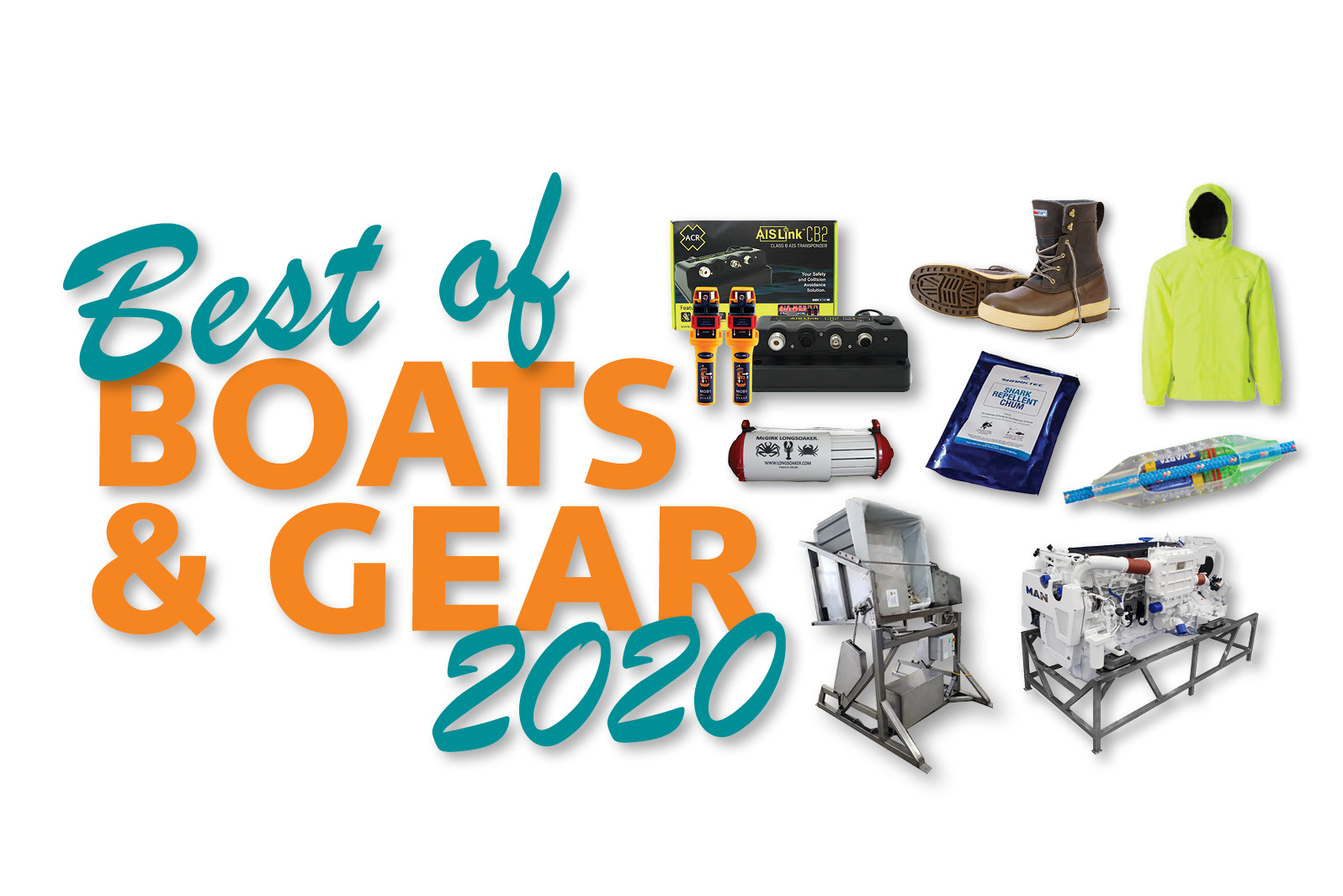While we may all agree that 2020 was an unforgettable year that we would like to forget, the fishing industry forged forward under adverse circumstances. Industry giants and a host of new innovators kept their shoulders to the wheel to help our fleets increase their catch and quality in the safest, most efficient way possible. Here are some of our favorites from a year that was decidedly not our favorite.
Engines
In 2020, European maker MAN Engines introduced the new D2676 LE426, an 800-horsepower, inline-six engine for light-duty workboats that is an upgrade of its popular 730-horsepower D2676 LE443. MAN’s American division expects the engine to be popular for shallow-water gillnetters in Bristol Bay, as well as lobster boats in Maine and Canada, and crabbers in the Keys. The engine offers a factory-fitted keel-cooling option, a feature that cuts weight by 5 percent over the previous engines cooled by heat exchangers.
The LE426 also has a new cylinder head and new injectors that boost the engine’s power density, bumping up the total power by 10 percent over the previous 730 horsepower version and providing plenty of thrust for boats across a number of fisheries.
Suzuki Marine also rolled out two new smaller four-stroke outboards, the DF115BG and DF140BG, which have 115 and 140 horsepower. They are the first in their smaller class with drive-by-wire technology, which has proved popular over past years in larger Suzuki outboards from 150 up to 350 horsepower.
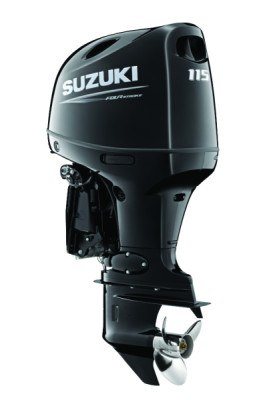
“In addition to drive-by-wire precision, these new outboards provide performance characteristics commercial fishermen will appreciate. For one, they deliver improved fuel economy at cruising speeds when compared to our existing 115- and 140-horsepower models. A higher compression ratio and aggressive gearing provide the robust hole shot needed to get heavily loaded boats up on plane. And these motors’ 40-amp alternators provide more charging output at lower engine speeds, to help keep electronics, pumps and other important gear humming,” Suzuki said.
Maintenance is easier, too. The oil filter can be replaced by clicking off the engine cover, and a new surrounding Oil Spill Catcher keeps waste oil off the ground and out of the water, while the engine is protected against fuel contamination by a Water Detection Fuel Filter.
Other exciting developments came about across the pond, with Norway’s Evoy putting the finishing touches on an emission-free 150-horsepower electric outboard, the most powerful on the market. Battery life means these electric outboards are not viable for most commercial fishermen, but Evoy is worth monitoring as batteries make consistent improvements.
UK-based Cox Powertrain completed its first U.S. installation of the new CX0300 Diesel Outboard. The classic four-stroke, V8 engine is the world’s most powerful diesel outboard.
Technology
Computers are everywhere else, so why not stick one in your trawl net? SmartCatch thinks the time has arrived and has spent years developing its DigiCatch, a realtime HD video, lighting, and sensor system that provides immediate, granular feedback from your net. CEO and SmartCatch co-founder Mark Dahm told NF that the device is all about efficiency.
“With digital, it’s realtime and (captains) can make the adjustments to improve their catch per unit of effort efficiency. It makes that standard equation of fuel consumption, labor, and horsepower more efficient,” Dahm said.
Adjustments can be made on the fly with point-of-catch video that provides reliable speciation, allowing for shorter test tows and clear bycatch feedback.
Dahm and SmartCatch co-founder Rob Terry have been testing and honing the DigiCatch for years on the West Coast and in Alaska, and are gaining traction in groundfish fisheries and midocean pelagics like pollock.
Dahm added that DigiCatch’s value lies not in just what it tells us about the fishing, but in the complete data set it provides that can increase efficiencies down the production line.
“The biomass of protein has the greatest value, of course, but we believe that as we add more data about the catch and the environmental conditions, that also creates an additional value that can be carried forward to the processor and even to buyers who want to get a forward view on what’s being captured,” Dahm said.
Dahm noted that major processors have expressed they could use the technology to get quick, reliable information from the fleet to optimize their equipment for grading and processing before the fish hit the plant.
Another company aiming to make the best of our catch is Alaska-based Certified Quality Foods. The linchpin here is the Certified Quality Reader, a handheld device that sends electricity through fish to measure the integrity of cellular walls and determine the product’s freshness.
With the CQR as the foundation, co-founder Keith Cox and his team are trying to revolutionize the way the seafood industry collects, organizes, and analyzes quality data of fish up and down the supply chain.
The company has been working with large processors like Trident Seafoods, as well as independent fishermen and researchers from universities to hone its product and expand its scope. Cox said the CQR represents a leap past industry quality measurements, which depend on organoleptics — simple smell, sight and touch.
The CQR can register a number of quality markers more objectively, and new cloud-based software allows users to collate that data across their fleets, providing widespread grading, and allowing for more targeted, informed approaches to improving fish quality, as well opening up possibilities at the point of sale to leverage premium products.
Outerwear
Undisputed champion of foul-weather gear Grundéns continued to lead the way in 2020. Thirteen lines of commercial fishing gear for men and four for women — the latter a quickly growing lineup — provide an ample range for fishermen across the spectrum. Fresh to the Grundéns quiver in 2020 was the new nylon Full Share line, a beefier version of the surprise hit Weather Watch, which was not exactly designed for deck work but took off as a lightweight, breathable, and quick-drying option for milder weather. The Full Share line took the Weather Watch jacket and bibs and added a thicker nylon shell and higher Durable Water Resistant, making them more suitable for the rigors of deck work.
Grundéns also increased its base-layer options, rolling out three different weights for the revamped Grundies line. These comfy, warm, and fast-drying layers are a far better option than the ubiquitous cotton hoodies and sweats. The heaviest weight, the Grundies Thermal, is a nylon, polyester and spandex mix, and has enough thickness to wear around the galley without offending others. The trim-fitting pants have a flat drawcord in an elastic waistband and jogger-style cuffs, and might replace your lucky sweats with a more functional alternative.
Upstart Duluth Trading Co. threw its hat into the raingear ring this year with the Resurrection Bay line of polyurethane gear that includes bibs, a full zip coat, and an anorak. This might be the stretchiest gear on the market, and it feels far more active than traditional raingear. While questions about season-to-season durability remain, this stuff is easy to work in, and a brushed polyester interior gives them some warmth and breathability.
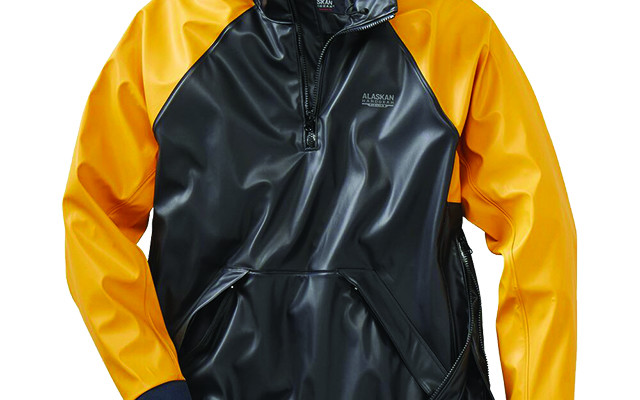
The boot market continued to find its footing in 2020. Xtratuf still led the charge with its classic Legacy holding ground and a host of new additions, including the new swift-selling Legacy Lace Up line, which now offers men’s and women’s 6-inch as well as a cozy men’s 8-inch insulated boot.
The Grundéns Deck Boss boot line was recently repatriated and can claim 100 percent U.S. manufacturing. The line now includes the classic 15-inch, along with insulated and steel toe versions and continues to gain acolytes.
Belgian maker Bekina seems to have hit a home run with its first commercial fishing boot, the new StepliteX Stormgrip. These boots incorporate the Legacy’s sleekness and the Deck Boss’ built-out outsole to make for an agile, comfortable, low-profile fishing boot. It still remains to be seen how the Stormgrip will hold up over time, but Bekina may have made the most wearable and functional boots on the market. They run big, so think about ordering a size down.
Catching
The UK’s Fishtek Marine rolled out two new lights that have proved to improve catch rates across a number of fisheries and species. Fishtek’s Robert Enever said the PotLight and the NetLight were developed to reduce seabird bycatch but turned up a pleasant byproduct: higher catch rates.
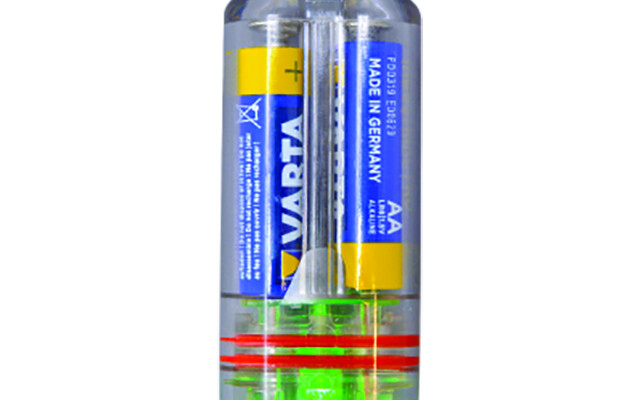
“Some guys in a snow crab fishery we work with noticed that when they used lights in their pots they caught the same amount of crabs while not using any bait. Then they noticed that when they used light along with bait they saw like a 70 percent increase in catch rates,” Enever said.
According to Enever, fish food like krill and plankton are attracted to the light, creating a halo of a buffet that draws target species into traps. The lights have proved effective not just with crab, but also with species as wide-ranging as cod, hake and lobster.
At just $5 and $7, these lights can go down 1,000 meters and flip on with an immersion switch at contact with water, saving the replaceable batteries.
Another trap fishery innovation comes in the form of the McGirk Longsoaker, a tubelike canister that provides fishermen with fresh bait up to five days after pots are set. A sealed basket in the tube is filled with up to a pound of bait and then fixed with a rubber strap. A zinc magnesium alloy release corrodes over time and pops the tube open to expose fresh bait well after the pot has been set. Varying-gauge releases last anywhere from eight hours to five days.
Another product to keep an eye on is the Shark Repellent Chum from SharkTec Defense. The chum incorporates necromones — scents emitted by decaying organisms — to ward off sharks. The company launched this year on the sport side, but testing for longlining has been positive, and SharkTec hopes to make the jump to commercial soon.
Safety and Sanitation
The new ACR Electronics AISLink CB2 Package combines existing ACR technologies to provide quicker, more precise crew-overboard response. This AIS kit communicates with the CB2 transponder as well as boats within five miles to pinpoint the subject. In conjunction, the MOB1 activates an alarm on VHF radio, alerting fellow crew members. Easily integrated into a life jacket, it measures just 134 by 38 by 27 mm, weighs 90 grams, and includes a built-in strobe.
Throw in a Fibrelight MOB Recovery Cradles from LRSE to go with your ACR package. This cradle is a very lightweight and versatile crew-overboard recovery system that can be manipulated by a single crew member or can be deployed as a scramble net or ladder, making it handy for both big and small boats. The SOLAS-approved cradle is made of PU-coated polyester webbing that is reinforced by carbon rods and weighs just 3.5 pounds per three feet, far lighter than anything similar on the market. The cradles are available from 6 to 27 feet long.
Covid-19 called for keeping things cleaner on boats, and the RinseKit portable shower units provide a nice option. These compact, stowable units come in two models, the RinseKit Pod and the RinseKit Plus. The Pod holds 1.75 gallons of water, while the Plus will hold up to 2 gallons of water and will run up to 10 minutes, depending on the setting. The shower heads have a metal hook on the back to hang them or use as a kickstand, and they make a handy remote hand sanitizing station.
Oysters and more
Hooper’s Island Oyster Co. came out with two new devices this year to streamline oyster production, the Outfeed Tumbler Conveyor and the Hydraulic Bin Tipper. The conveyor bumps up continuous processing of oysters from 300 to tens of thousands by eliminating the need to clear belts or change tubs. The bin tipper , meanwhile, automates the dumping along the production line, from hoppers to conveyors to tumblers. This hydraulic unit does not anchor to the floor, which means it can be moved around the plant floor, and safely lifts 1,500-pound totes.
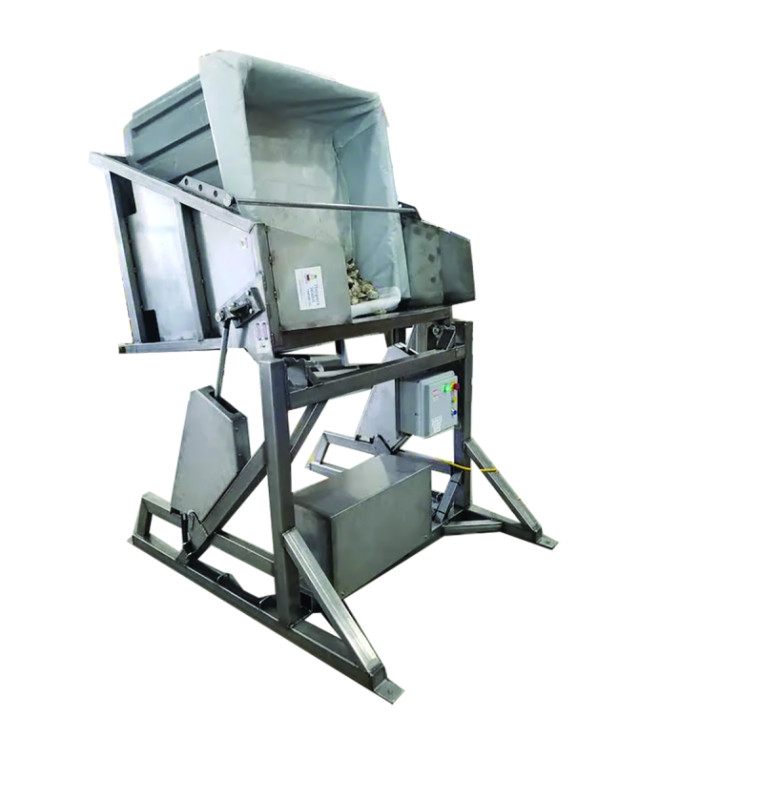
DLBA Naval Architects also rolled out a new design for an Aquaculture Support Vessel. DLBA’s John Garvey told NF that he had an extensive back and forth with shellfish farmers to hit on a design that was ideal for the job.
The result is a user-friendly ASV aluminum alloy boat that is 30 by 12 feet with a flush, clean deck, free of tripping hazards. Made of thick aluminum alloy plating, the solid, open deck also provides working space for an onboard tumbler, saving trips to shore. The other key to the boat is a ballast tank that provides superior stability and keeps the vessel grounded even when the onboard knuckle boom is extended and lifting heavy blocks. Customers can buy the plans from DLBA and have a local builder put the boat together in around 60 days.





